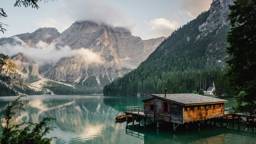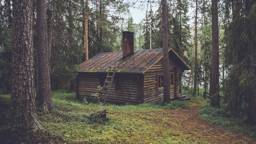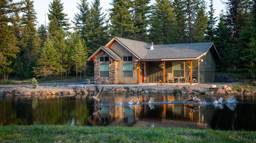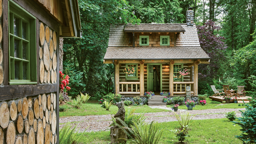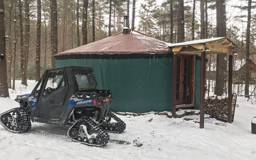I will never become the Secretary of the Treasury. Goldman Sachs will not ask me to head its investment firm. Milton Friedman will not call me for advice.
Why do I make these assertions? The short answer is that about 10 years ago I invested close to $38,000 in a well-planned, well-built septic system in order to eliminate the leaching failures of my previous system. Then, four years later I signed on to a commission whose purpose was to build a local sewer system that, in essence, would make my expensive system totally obsolete. Are we talking about working against your personal economic self-interest? It would seem so.
Why? So why would I do such a thing? The problem I faced is one facing many of us cabin and lakehome owners. With an ever-heavier concentration of people in what used to be unpopulated areas, our septic tank technology wasn’t keeping up.
The trouble is septic systems really only work well when human populations are widely dispersed. As we build up in concentrated areas, we collectively create problems.
I remember when I was a boy how clear the water was in all the lakes around my hometown. Today, as I look at these same areas, I see a vastly different picture. The water is not as clear, weeds proliferate and the hills and valleys are heavily populated with cabins and vacation homes. And I am one of these cabin owners.
The trouble with septic. A heavy concentration of people creates a high output of waste, which has to be properly processed. Many cabins and lakehomes rely on septic systems. The problem with these is that they can leach pollutants into the soil if they are not working properly.
The biggest contributor to septic failure is too much water going into the system. Heavy use of automatic clothes washers generates a tremendous amount of wastewater with high phosphorous content. Other things that challenge a septic system are heavy use of showers, dish washers and flushing toilets.
What to do? Well, there is a solution that can work in some situations: a public sewer line. Against my own short-term economic interest, I have for the past few years served as chairman of a sanitary district charged with installing a 131/2-mile-long sewer line along the shore of a large lake. This six-year project has reached its conclusion and is in full operation. What we like to say now is that the ice along the shore last winter was perfectly white!
This was an extremely difficult project because the shoreline was primarily rock, which required much blasting, directional drilling, etc., in order to place the main lines below the frost line. The project was expensive for each individual landowner, but the beneficial results to the lake and the environment are clear.
Finances. Here are the basic economic facts for a homeowner in our district. A special one-time assessment of $5,500 is paid over 20 years at 1.6 percent interest – about $344 annually. Additionally, a $63 monthly charge heavily amortizes the rest of the loan. So in the final analysis, it’s costing each of us $1,100 annually for a clean, dependable sewage collection and treatment system.
Remember that $38,000 I spent on my septic system? Such a system only works well for about 10 years in our area. For the new sewer system, my total cost will be $22,000 over 20 years. So which is the better deal? The answer is obvious.
You may be wondering how to get started. Our project started with interest from the local community club. Many cabin owners have an association that could fill that role. It’s a good option that we all need to consider.
Maybe the Treasury needs me, after all!
Lars F. has refused the 12-step plan to control his cabinitis. Only his first name is used to protect his identity.
Why do I make these assertions? The short answer is that about 10 years ago I invested close to $38,000 in a well-planned, well-built septic system in order to eliminate the leaching failures of my previous system. Then, four years later I signed on to a commission whose purpose was to build a local sewer system that, in essence, would make my expensive system totally obsolete. Are we talking about working against your personal economic self-interest? It would seem so.
Why? So why would I do such a thing? The problem I faced is one facing many of us cabin and lakehome owners. With an ever-heavier concentration of people in what used to be unpopulated areas, our septic tank technology wasn’t keeping up.
The trouble is septic systems really only work well when human populations are widely dispersed. As we build up in concentrated areas, we collectively create problems.
I remember when I was a boy how clear the water was in all the lakes around my hometown. Today, as I look at these same areas, I see a vastly different picture. The water is not as clear, weeds proliferate and the hills and valleys are heavily populated with cabins and vacation homes. And I am one of these cabin owners.
The trouble with septic. A heavy concentration of people creates a high output of waste, which has to be properly processed. Many cabins and lakehomes rely on septic systems. The problem with these is that they can leach pollutants into the soil if they are not working properly.
The biggest contributor to septic failure is too much water going into the system. Heavy use of automatic clothes washers generates a tremendous amount of wastewater with high phosphorous content. Other things that challenge a septic system are heavy use of showers, dish washers and flushing toilets.
What to do? Well, there is a solution that can work in some situations: a public sewer line. Against my own short-term economic interest, I have for the past few years served as chairman of a sanitary district charged with installing a 131/2-mile-long sewer line along the shore of a large lake. This six-year project has reached its conclusion and is in full operation. What we like to say now is that the ice along the shore last winter was perfectly white!
This was an extremely difficult project because the shoreline was primarily rock, which required much blasting, directional drilling, etc., in order to place the main lines below the frost line. The project was expensive for each individual landowner, but the beneficial results to the lake and the environment are clear.
Finances. Here are the basic economic facts for a homeowner in our district. A special one-time assessment of $5,500 is paid over 20 years at 1.6 percent interest – about $344 annually. Additionally, a $63 monthly charge heavily amortizes the rest of the loan. So in the final analysis, it’s costing each of us $1,100 annually for a clean, dependable sewage collection and treatment system.
Remember that $38,000 I spent on my septic system? Such a system only works well for about 10 years in our area. For the new sewer system, my total cost will be $22,000 over 20 years. So which is the better deal? The answer is obvious.
You may be wondering how to get started. Our project started with interest from the local community club. Many cabin owners have an association that could fill that role. It’s a good option that we all need to consider.
Maybe the Treasury needs me, after all!
Lars F. has refused the 12-step plan to control his cabinitis. Only his first name is used to protect his identity.
A Tale of Two Sewer Projects
This table compares my commission’s sewer project to a much smaller project in my area. The smaller project covered a distance of two miles as opposed to our 131/2 miles, yet the cost to individual property owners was very close. Soil and rock conditions were roughly the same in both locations, so this is a good approximation of the cost per mile of current projects in my area of the country. Click to enlarge.
This table compares my commission’s sewer project to a much smaller project in my area. The smaller project covered a distance of two miles as opposed to our 131/2 miles, yet the cost to individual property owners was very close. Soil and rock conditions were roughly the same in both locations, so this is a good approximation of the cost per mile of current projects in my area of the country. Click to enlarge.
 Jared Matson, Dreamstime.com
Jared Matson, Dreamstime.com 



